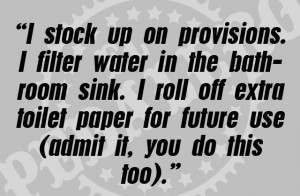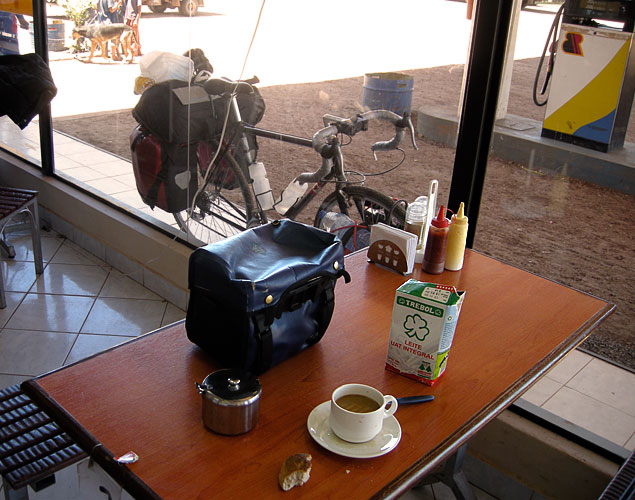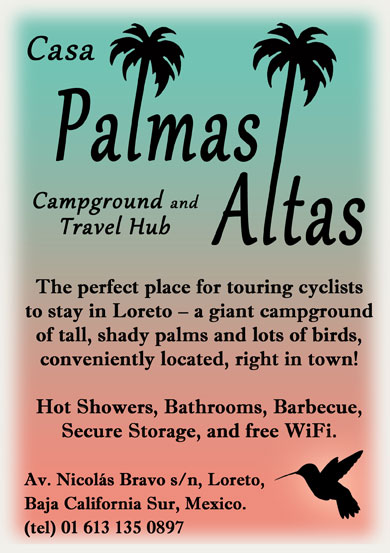Fill’er Up And Go! Why I Love Gas Stations
What is it about gas stations? Even though they represent everything I despise, I love them! When I’m riding Latin America’s lonely rural roads for days at a stretch and I come across one, concerns about pollution, greed, and globalization become overshadowed by concerns about food, water, and toilet paper.
 The first thing I do at the gasolinera is make friends with the staff (the lone, bored attendant usually appreciates the company). But I may be there a while and I don’t want to outstay my welcome, so I’m super friendly. Then, I buy something (to prove I’m a real customer) and I settle in.
The first thing I do at the gasolinera is make friends with the staff (the lone, bored attendant usually appreciates the company). But I may be there a while and I don’t want to outstay my welcome, so I’m super friendly. Then, I buy something (to prove I’m a real customer) and I settle in.
I read, I write, I study maps, I ask questions. I stock up on provisions. I filter water in the bathroom sink. I roll off extra toilet paper for future use (admit it, you do this too). I grab complimentary packets of salt, pepper, sugar, and whatever else looks useful. Sometimes, I’ll hang out for a couple of hours just for the air conditioning. I’m making myself sound like a bum, I know, but really it’s survival. Maybe I won’t see a supermarket (or even people) for days. I have to be prepared. Different rules apply on the road.
And gas stations are a great place to camp. Sure, I’d rather camp somewhere secluded, away from the road, near a stream. But on a solitary highway in a dry, treeless landscape (Route 40 in Argentine Patagonia, the Altiplano, the Peruvian/Chilean coastal desert, large parts of Mexico) there’s no water for cooking, washing, or drinking (only what’s left in the bottles) and no protection from wind, rain, or human eyes.
So, when I see a gas station, I ask right away if I can camp around the back. The more remote the location, the less strange this request sounds (I’ve never been turned down). Now, I have shelter from the wind, access to water, access to a toilet (often, with a sink to wash my clothes and body). If I’m lucky, there will be canned food, coffee in the morning, and a table to eat at. Also, I have the protection of the night staff (my new friends) who keep an eye out while I sleep–way safer than camping exposed by the side of the highway.
If I’m ever too sick to ride, or the bike is broken, or the road has gotten too dangerous, the gas station is the best place to hitch a ride. I wait for an open-back pickup to show up and I approach the driver while he’s pumping gas. I’ve learned not to be shy when I need help. Besides, some great friendships started this way.
What are your experiences with service stations as a touring cyclist in Latin America? Share a comment below!
National/Major Brands By Country:
YPF: Argentina
PDV: Venezuela
Pemex, Oxxo: Mexico
Petrobras: Brazil
Copec: Chile
Cupet-Cimex, Oro Negro: Cuba
Puma: El Salvador
gas/service station: estación f de servicio or (RPl) de nafta; gasolinera f; bomba f (Andes, Ven); bencinera f (Chi); grifo m (Per)
attendant: empleado -da mf
gasoline/petrol: gasolina f; nafta f (RPl); bencina f (Andes)
gas pump: surtidor m: bomba f
Feature image (top of page): Gasolinera in the Bolivian Andes
© El Pedalero, 2012.








I can’t say that I’ve been to a gas station in Latin America yet, but when I was cycling through Turkey and Iran gas stations were little havens! We used to camp in their picnic, garden area, get invites to join truck drivers for tea or fruit, and surprisingly met some amazing local people. Glad to hear that it might be a similar experience in Latin America.